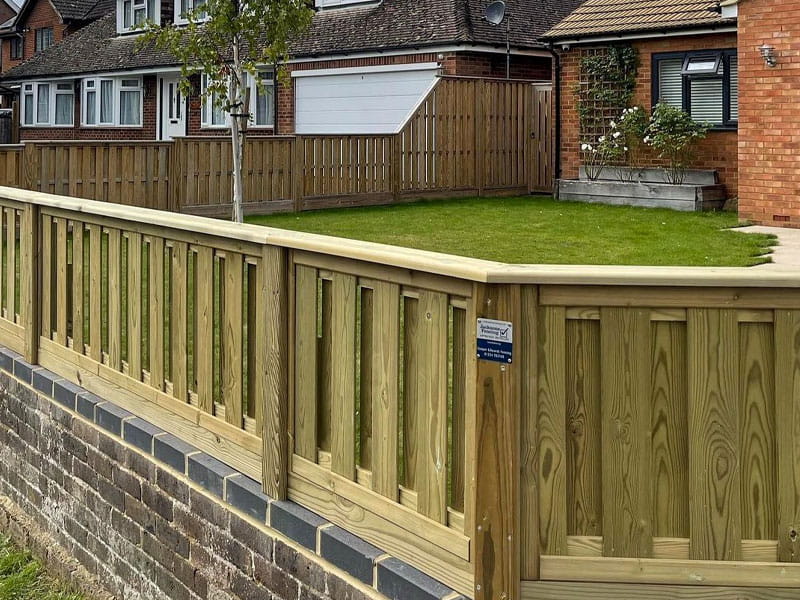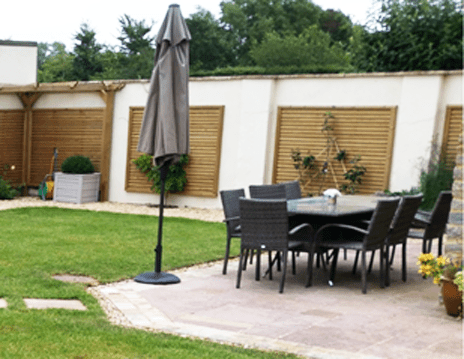11/04/2022 12:00 AM
Attaching Trellis or Fence Panels to a wall
There are a couple of key reasons why you might want to attach trellis panels or fence panels to a wall. The first is to increase the height of an existing wall to improve privacy. The second is to attach panels to the face of a wall for aesthetic purposes. Both allow for plants to be grown up the wall and can take away the harsh look that a wall can sometimes bring to a garden.
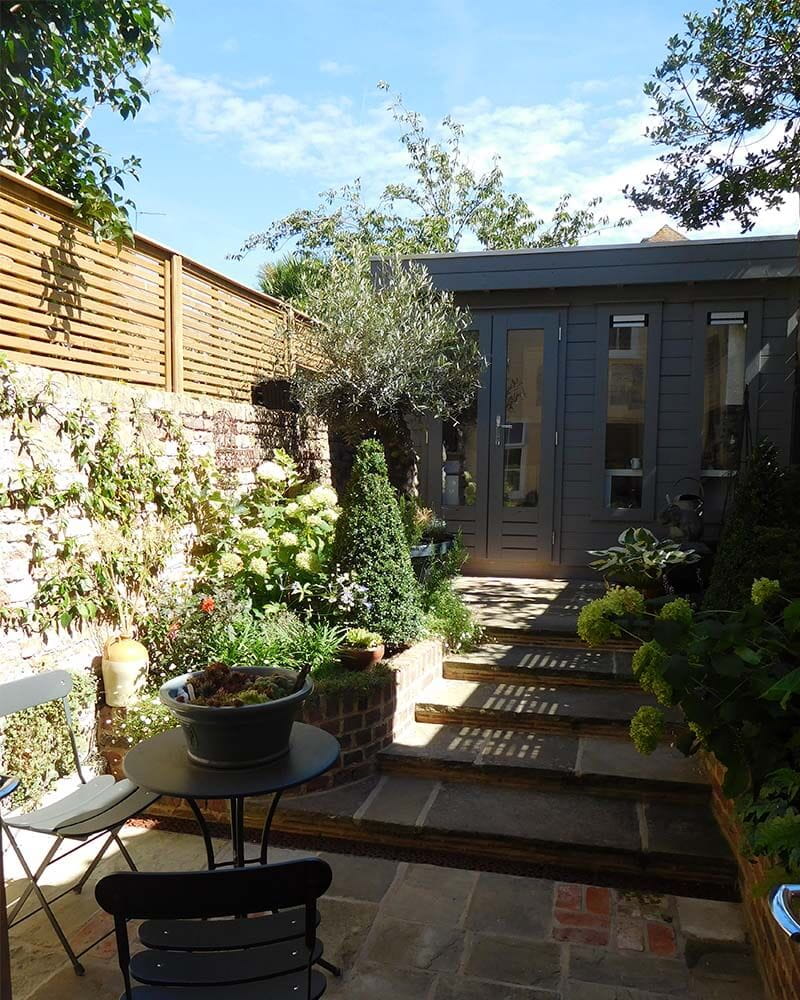
Make sure the wall is a safe and has a solid foundation for the panels
Before you start any project, the most important aspect is to make sure the wall is in good condition, well-built, and designed in a way that will enable it to handle any extra load. If the panels will be attached to the front of a wall, this will add additional strain compared to if the panel was sitting on top of the wall. Fence panels are not lightweight and if plants are grown up the panels the weight will become heavier, increasing the load on the wall. If the panels are being attached to the top of the wall, then this will expand the surface area, and any wind hitting the wall could increase the strain during high winds and the chances of it failing.
We would always recommend that an expert assesses the integrity of the wall before starting the project. As a company we take no responsibility for the structure and integrity of the wall that any of our products are fixed to, nor the choice of fixings. We cannot accept any responsibility for the strength or durability of the fixing method, or the surface or wall it is fixed to, due to external factors such as wind loads and weathering of the surface or wall, or damage by force from vehicles, intruders climbing, etc.
We recommend making sure that the wall is your boundary. Even if it is we always recommend discussing with neighbours before ordering products or starting any work.
Attaching Trellis / Panels to the face of a wall
This technique is commonly used when the main goal is to take away the harsh look of a wall or hide it completely from view. Attaching trellis or a fence panel to a wall can create an eye-catching centre piece along with giving climbing plants something to attach to.
When attaching panels to walls, we generally recommend that the fence panels or trellis are a framed panel. Not only do they look better when attached but they also have less chance of moving over time. It also makes installation a lot easier as you have more surface area to use to attach the panel to the wall.
There are several ways to attach a fence or trellis panel to a wall, but the most common way is to attach pieces of timber or timber batten to the wall and then screw through the panel into the battens. This allows the panel to be installed away from the wall with an air gap, reducing any chance of damp and allowing plants to grow behind.
A timber batten you can use to install a fence or trellis to a wall can be found on our website (667300C). The batten is 54mm x 46mm.
To attach the batten, we recommend drilling into the wall and then using wall plugs to securely hold in place.
We advise avoiding attaching the battens near the top row of bricks as this could weaken the top of the wall. The fence or trellis panel can then be attached to the battens by drilling through the frame and screwing into the battens.
Attaching Fence Panels or Trellis on top of a wall
As mentioned above, the type and strength of a wall will determine how the panels are fixed to the wall. By default, we would always recommend running posts down one face of the wall and fully concreted in at the foot, possibly with additional fixings into the wall if extra strength is needed and the wall is able to take the wind forces of the added panels.

Using a Fence Post foot on top of the wall
If the wall is built with double brick thickness or more and is strong and solid and you are using trellis or panels that are relatively short, using a fence post foot is one possible way to secure the panels to the wall.
The most common method (although we cannot recommend a particular way due to not knowing the strength and integrity of the surface you are installing into) is to use a combination of metal studding and epoxy resin to attach the foot to the wall.
Remember to use a suitable length of studding and after drilling the holes always use an air blow pump or similar, to remove the dust before adding the epoxy resin. Another tip is to mark out, carefully drill, blow out and check all the holes first, then use the Epoxy resin and fix as many fixings as possible in one go due to the speed in which epoxy resin dries.
The holes in the plate of our Jakpost feet are 10mm, allowing for M8 studding.
Timber Slotted Fence Post Foot

Attaching posts to the face of a wall
This is another common way to install trellis or fence panels above a wall. Timber posts are attached to the face of the wall and rise above the current height of the wall, allowing panels to be attached. In most cases, the posts will be fixed the full height of the wall as this will spread any load further down the wall. It is also important to avoid fixing to the top row of bricks. 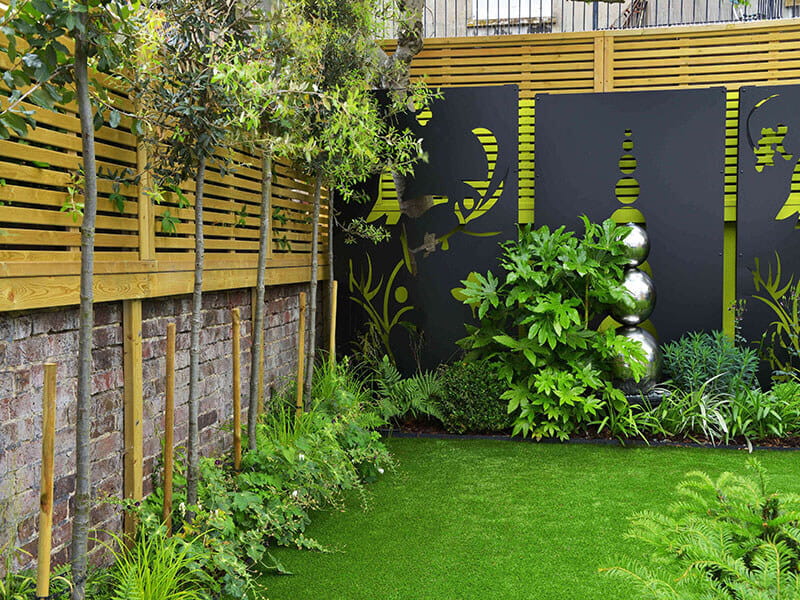
Installing the fence in front of the wall
Another way to install a fence above a wall and remove any risk of the extra load, or to keep the fence inside your own boundary, is to install fence posts in the ground in front of the wall and then install the panels at a height above the wall.
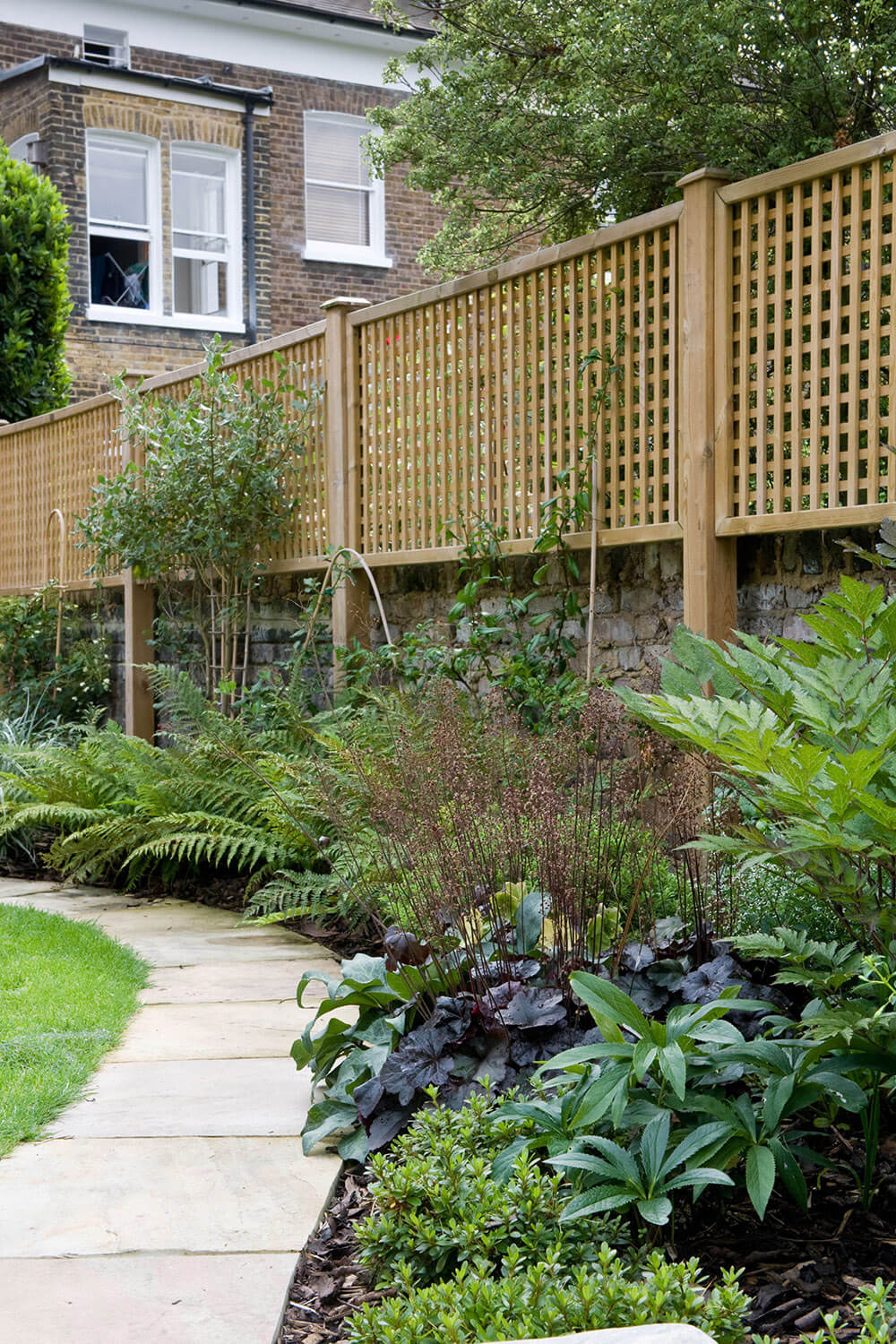
The existing foundation of the wall can sometimes be difficult to dig and that will also determine how close to the wall the fence can be installed as you do not want to remove too much of the foundation as that could affect the integrity of the wall itself.
The fence post also needs post mix fixing all the way around so you will always have a clearance area away from the wall.
Fencing can then be installed in the standard way with fence panels being secured at the top of the posts rather than on top of a gravel board at the base.
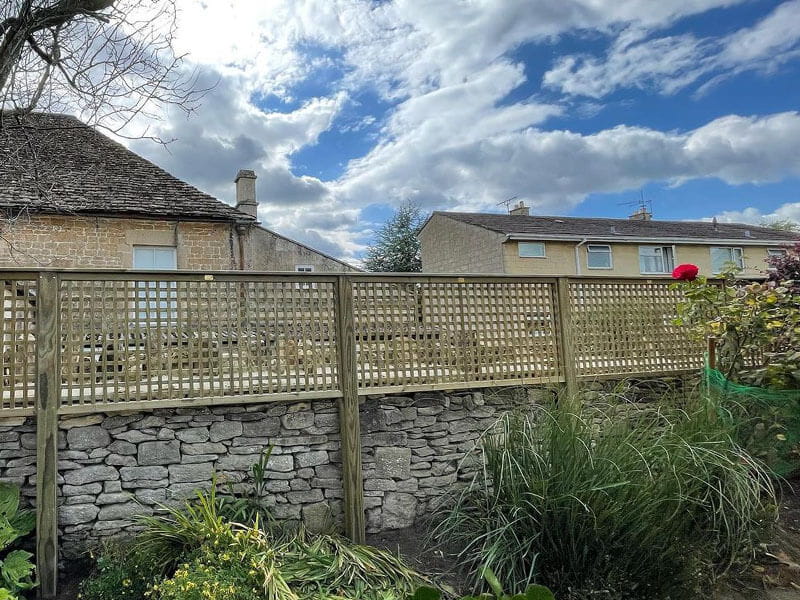
A purpose-built wall for a fence
In most scenarios the wall already exists, but if the idea is to produce a wall but incorporate fencing, the easiest way to do this is using brick pillars leaving space for fence panels between each pillar.
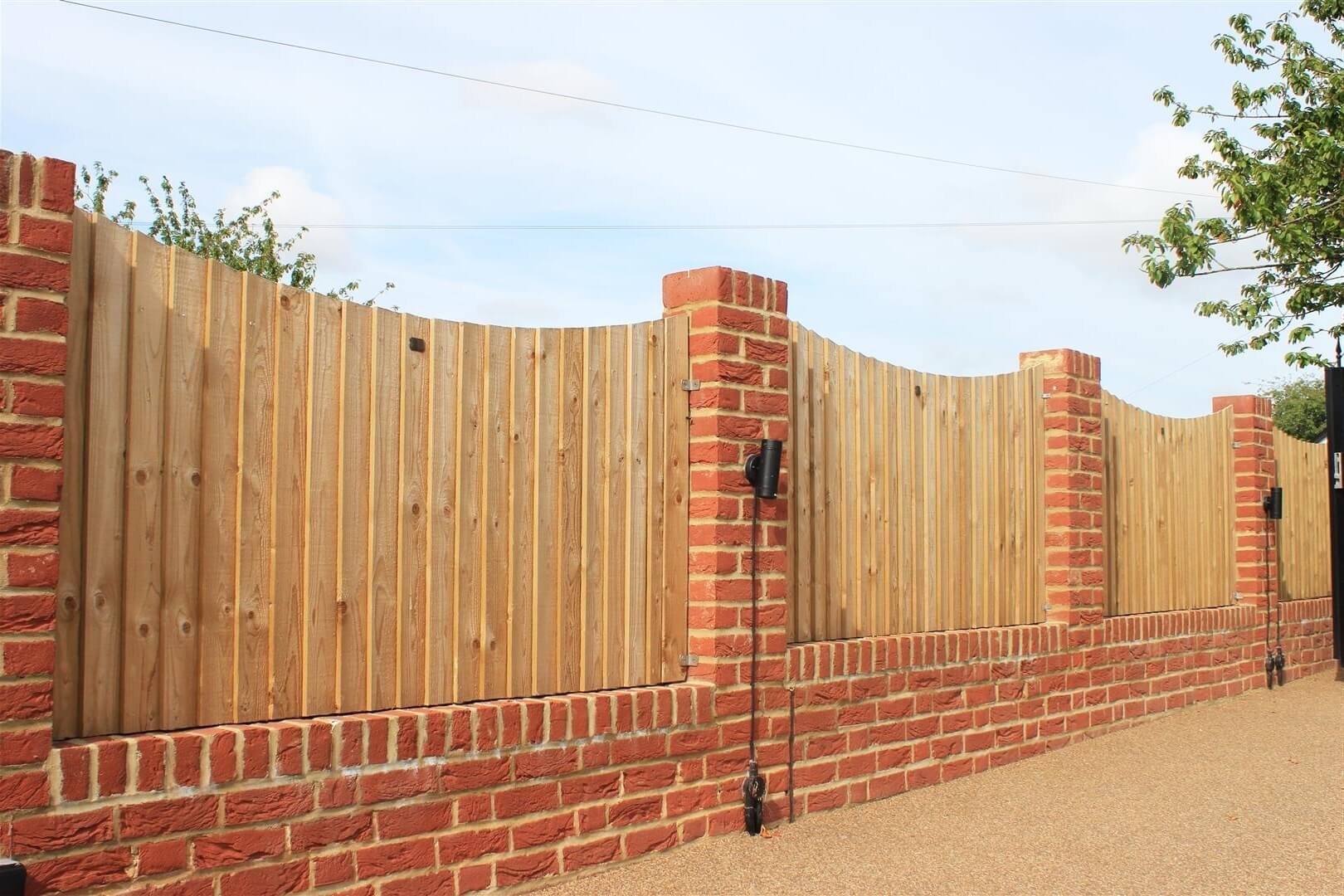
Related Content
How to attach fence panels to posts
Read one of our customer project on how one of our Approved Installer installed a front garden fence on top of a wall.
